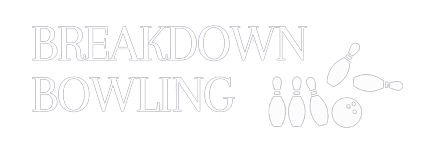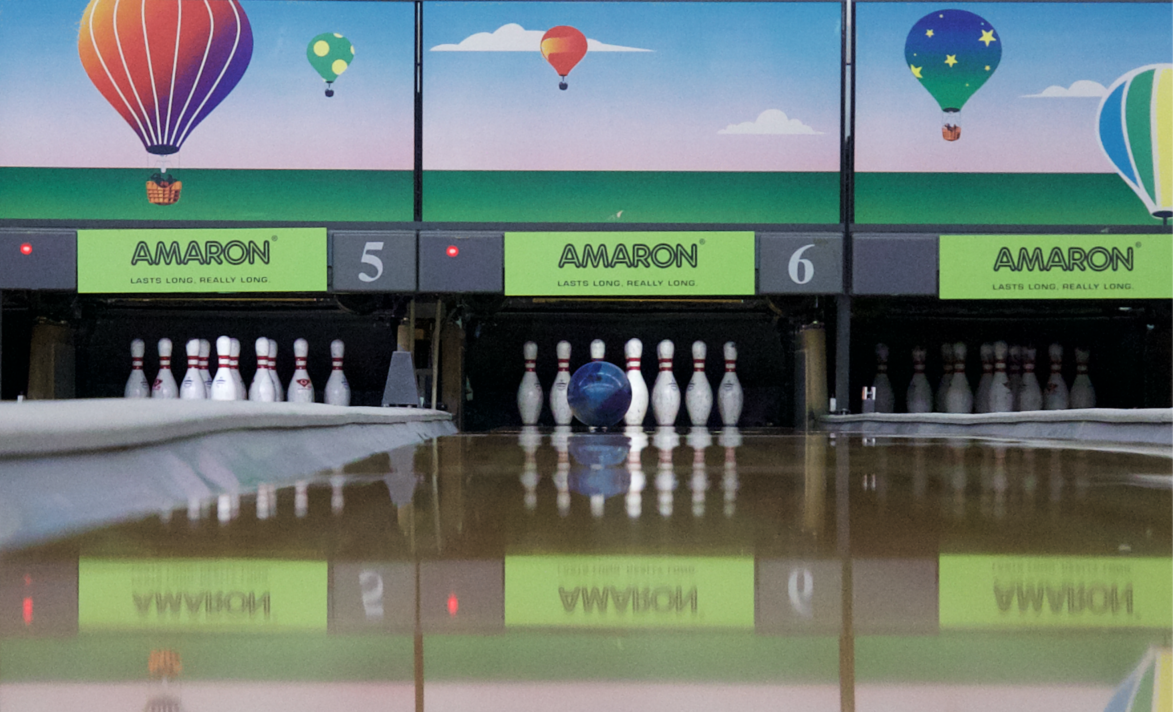For anyone who has just learnt to bowl, being able to throw the shot consistently and learning to take is probably enough to give a decent average anywhere. However, if you want to take your game to the next level, or are just bored of throwing at the same arrow repeatedly, then this guide is for you! We will go through the basics of a targeting system and what it means to ‘bowl a line’, which lays the foundation for more advanced laneplay and competitive bowling.
Three target points
Let’s start by imagining ourselves rolling a ball straight down the second arrow, parallel to the gutters. This means that the ball is released on the 10th board at the foul line (the laydown point), rolls past the second arrow, and eventually makes contact with Pin 6 (Pin 4 for left-handed bowlers).
Will this actually happen? Probably not. At some point beyond the arrows, at around three-quarters (45 feet) down the lane, the ball will start to ‘break’, or change its direction. It is no longer moving parallel to the gutters, but towards the head pin. We call the point at which the ball starts to change direction the . In fact, if you looked at a video of a ball in slow motion, you might even be able to see two changes in direction!
We use the three points where the ball rolls across: the laydown point, the arrows and the breakpoint as visual markers for our targeting system.
The laydown point
The first point in our targeting system is the laydown point, where the ball first lands when it is released at the foul line. For most of us, it should not be too far beyond the foul line itself, and it should be as close to our ankles as possible without hitting ourselves.
In order to make use of this point, we need to be able to release the ball at a consistent lateral distance from the ankle of our sliding foot. If you aren’t able to do that yet, then do take a look at the foul line drill and the one-step drill in our Ultimate Beginners’ Guide! For most of us, we will release the ball around 6-7 boards away from our ankle. We recommend bowling a few shots straight down the second arrow using the foul line drill to determine this distance.
Next, we need to determine the amount of drift that we have, which is how far away from the starting point we eventually end up at after our full bowling approach. To do this, bowl a few shots normally and comfortably, while keeping track of where you start and where you end. Again, if it varies a lot, then we recommend more practice to achieve some consistency.
Now that we have both these numbers in our head, we are able to calculate our standing position given our desired laydown point! For example, if I am a right-handed bowler who drifts leftwards by 2 boards and releases the ball 7 boards away from my ankle, and I want a laydown point at the 10th board, then I should stand at the 15th board (10+7-2)!
The arrow zone
The second visual marker we use is the board at which our ball crosses the arrow zone. Using the arrows as a target should come quite naturally to us as it is close enough for us to see accurately, and far enough such that we have enough time to spot the ball after we release it.
A traditional targeting system that still remains popular today simply makes use of the laydown point and the arrows to define our bowling line. If we bowl parallel to the gutter at the second arrow, then we call the line ’10-10′, as our laydown point is at the 10th board, and the ball crosses the second arrow. On the other hand, if we wanted to send the ball out at an angle, then we might have a laydown point at the 12th board, but still cross the second arrow. This line is called ’12-10′
The breakpoint
The last visual marker we use is the . As mentioned earlier, it is the point at which the ball first begins to visibly change its direction. We won’t go into the details here, but this happens because of 2 reasons. Firstly, the ball moves from a region with oil to a region without oil. It thus stops skidding along the direction it is thrown, and moves towards the direction it is rolling. Secondly, the ball is not rolling in the same direction it is thrown, which eventually affects the ball’s path when it reaches a dry part of the lane.
The is a little harder to visualise because it is further down the lane, and because it depends on a variety of factors. The lane conditions, the type of ball that is used, and the bowler’s individual style all affect how far the ball rolls down the lane before reaching the breakpoint. There is no easy way to learn how to pinpoint the breakpoint on the lane. What we can do is to practice on a variety of different conditions so that we begin to improve our judgment on where we expect our breakpoint to be in different scenarios.
Putting it together
As mentioned in the arrow zone section, many bowlers define their line based on the laydown point and the arrows. However, using the breakpoint is now considered to be the standard, and best way to define your bowling line. This is because the breakpoint is the point that is closest to the pins, and thus there is less variance between this point and where your ball eventually ends up. If you are able to hit the same breakpoint consistently, then you are more likely to have a consistent result at the pins as well. This may not be the case if you can hit the laydown point or arrows consistently. Targeting using the breakpoint also allows us to adjust to the lane’s oil pattern more easily.
Thus, we now use three points to define our bowling line. If we know a bit of geometry, we know that it actually takes just 2 points to define a line, and this is the case here as well. Many bowlers leave out the laydown point, because we are able to define our bowling line with just the arrows and breakpoint.
For example, we may want to reach the breakpoint at the 8th board, and bowl at the 12th board at the arrows. We estimate the breakpoint to be around 45ft down the lanes, and since the arrows are at 15 ft, that means we need our laydown point to be at the 14th board. After factoring in our drift and distance from the ankle, we should be able to find out where to stand in order to bowl this line!
Learning how to bowl a line is fundamental to improving your game and getting towards a competitive level of bowling. However, understanding the line is just the first step! In order to really improve our game, we will need to practise bowling on a variety of lines and angles so that we can do it consistently, as well as understand which lines are best for which conditions. Do check out our other articles to find out more!


Is it safe to say that if the break point is 35 feet then the lay down board will be the 13 board ?
Hi Joe thanks for the comment! Let’s say we want to keep our target at the arrows at the 12th board. Our ball would travel as such:
Lay down point (0ft): 13th board
Arrows (15ft): 12th board
30ft: 11th board
If the breakpoint is at 35ft, then it would be slightly under the 11th board.
Alternatively, if we wanted our breakpoint to be at the 8th board and the lay down on the 13th, then we would be aiming at around 10.5 boards at the arrows. I hope this helps!